At 10 years old, the host from our Kaza Guest House, escaped with his mother, father and 2 brothers over the Himalaya from Tibet to Nepal. Near the border they were shot at by Chinese and it took 3 months for the journey. They arrived in Nepal with nothing. It was the same year that the Dalai Lama escaped Tibet during China’s ‘Cultural Revolution’. Most things Budhist in Tibet was destroyed or banned. At 15 he was working on the Indian roads with his parents – he earned 1 1/2 rupees for an 8 hour day, his mother 2 1/2 and his father 3 rupees. In those days you bought rice for 2 rupees a kg or flour for 1/2 a rupee. (exchange rate today is approx 50 rupees for a NZ dollar. His went on to become a skilled carpet weaver and then employed to teach Tibetan craft skills to others in the Spiti valley where he met his wife and then went on to set up a guest house on her land. He is unable to own land and unable to return ever to Tibet but he has a good life here in Kaza, in the Spiti Valley, where one is surrounded by the Budhist Religion
There are prayer flags fluttering everywhere, in the middle of the road it is not uncommon to come across a mani wall (piled with mani stones enscribed with Oh Mani Padme Hum) that we have to go round clockwise. Luckily the driving is on the left here! High points on tracks are marked with chortens and flags and many locals walk around constantly fingering their 108 mala beads round and round. The Tabo monastry here is over 1000 years old and many of the thangkas (painted silk hung on the wall depicting a scene or mandala) have come from Tibet when this area was closely aligned and there was no border.
From Nako we dropped to the Spiti river and cycled to Tabo, where we had an adventurous walk up and across endless scree slopes that seem to line the valley. Unfortunately we were unable to look into the rooms of the historical Tabo monastry. This monastry is unusual in that it is not perched on the side of a mountain but sprawled on the valley floor.
Next highlight was the Dhankar Monastry and village – this one is 700 years old and from one fund raising sign in the monastry ‘in imminent state of collapse’. How they constructed the monastry, palace and fort on the rocky ridge is a mystery but weather and earthquakes are not helping its longevity.
An intriguing event (for us) that happens in Dhankar is the morning departure and evening arrival of the goats. We witnessed the arrival first, hundreds of goats come streaming thru a small road gap and they fan out, making their way in groups or individuals to their own household pen. Most families have 10 – 20 goats but they are grazed as a village herd. At 9 in the morning we watched the reverse. Simple things…
Next stop was Kaza where I crawled into town in lowst gear with low energy and went straight to bed, I think it was due to a bad reaction to bed bugs or some biting critter. The weather was grey and cold and it was snowing up high. Kaza is the district capital and a bit of a tourist centre.
We endured a night of the dogs of Kaza (bark all night, sleep all day!) before finding home at the Kunzuam Guest House, where our lovely Tibetan man is, a little out from the town centre.
Our next foray was to the Kye monastry, 20 km up valley from Kaza and quite medieval. We enjoyed a look around the monastry and a stunning hike straight up the mountain behind. The scorpian spider spotted just outside our room had us a trifle concerned..
(please excuse lengthening text – is inversely proportional to the speed of the photo uploads – got to amuse myself somehow while I am sitting here waiting, waiting!)
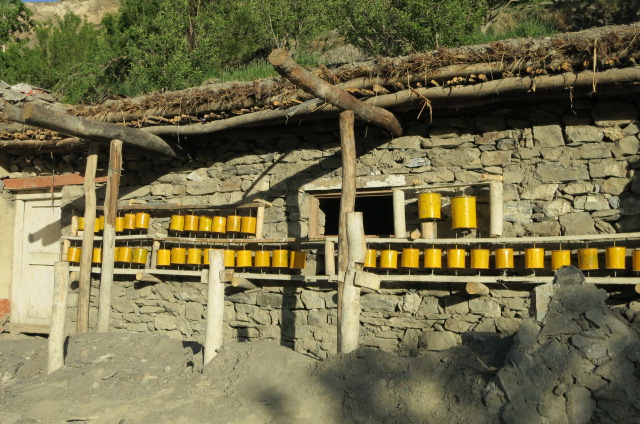








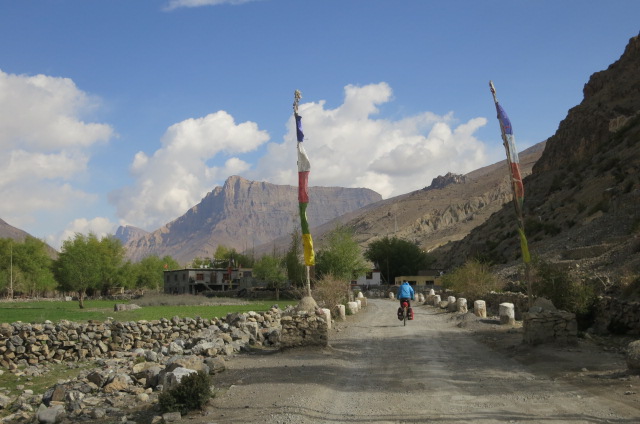



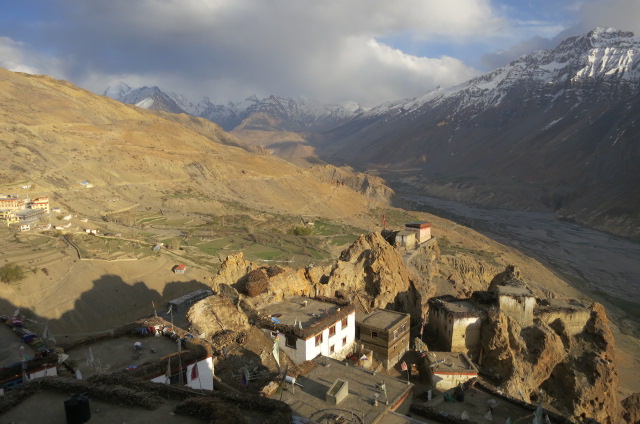





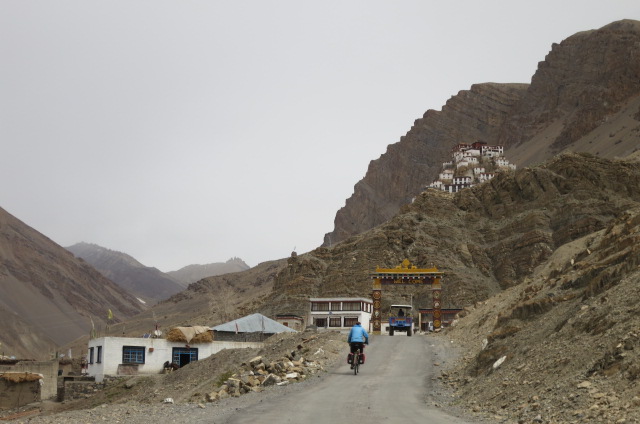
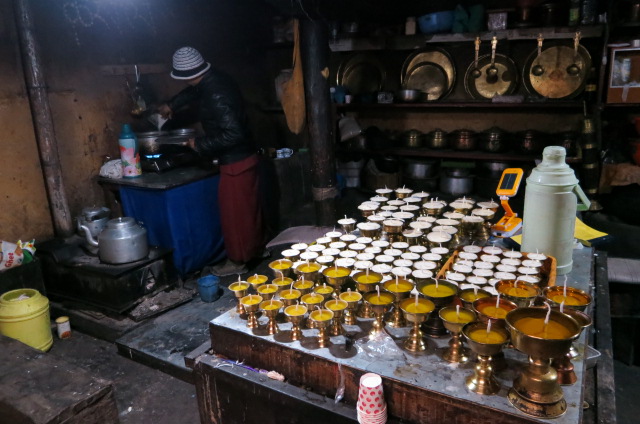
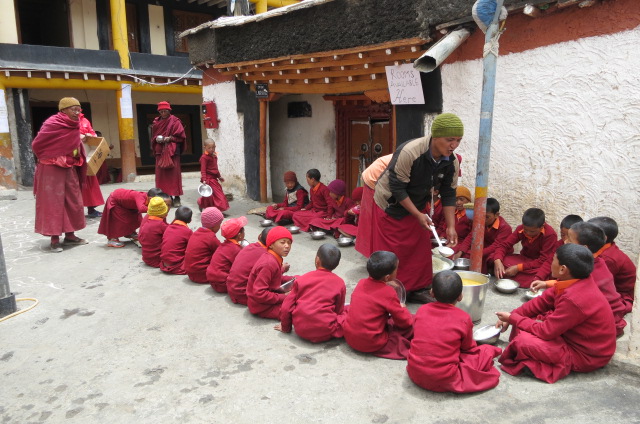



the next pic
